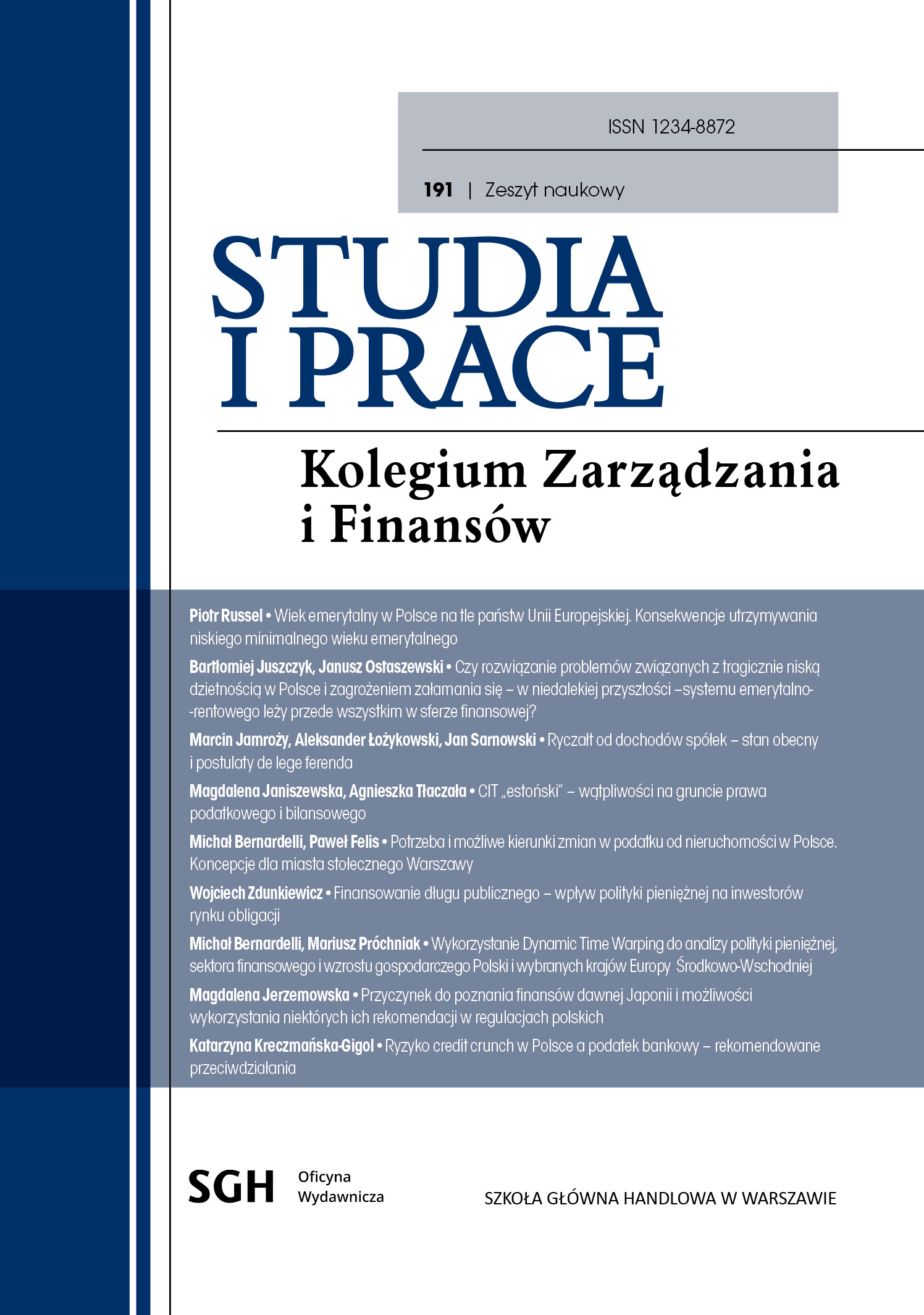Utilising Dynamic Time Warping to analyse the monetary policy, financial sector, and economic growth of Poland and selected countries of Central and Eastern Europe
DOI:
https://doi.org/10.33119/SIP.2023.191.7Keywords:
monetary policy, financial sector, economic growth, dynamic time warping, similarities of time seriesAbstract
The aim of this study is to examine the impact of the monetary policy (and, more broadly, the financial sector) on the real economy in selected European countries, taking into account their fiscal policy as well. The study includes 15 European countries that are not part of the eurozone and covers the period of 2010–2022. In the analysis, we utilise the Dynamic Time Warping (DTW) method, which is an innovative method for comparing time series, particularly novel in the fields of economics and finance. We compare the countries based on five variables: interest rates, the money supply growth rate, the state consumption expenditure growth rate, the economic growth rate, and the inflation rate. The results show that based on the variables representing the monetary policy (interest rates and money supply dynamics), two clusters of countries with similar monetary policy approaches can be identified. The study provides several recommendations for economic policy, particularly in the field of monetary policy.
Downloads
References
2. Bernardelli M. [2023], Assessment of the Similarity Between the Business Cycle Phases, w: Monitorowanie działalności gospodarczej. Gospodarka po pandemii COVID-19, red. M. Radzikowski, Oficyna Wydawnicza SGH, Warszawa.
3. Bernardelli M., Próchniak M. [2023], The Analysis of Economic Growth and Monetary Policy for Poland and Selected Central and Eastern European Countries with the Use of Dynamic Time Warping, w: Modeling Economic Growth in Contemporary Poland, red. E. Bukalska, T. Kijek, B.S. Sergi, Emerald Publishing, Bingley, UK.
4. D’Urso P., De Giovanni L., Massari R. [2021], Trimmed Fuzzy Clustering of Financial Time Series Based on Dynamic Time Warping, „Annals of Operations Research”, 299.
5. Focardi S.M. [2001], Clustering Economic and financial Time Series: Exploring the Existence of Stable Correlation Conditions, The Intertek Group Discussion Paper, nr 2001–04.
6. Franses P.H., Wiemann T. [2020], Intertemporal Similarity of Economic Time Series: An Application of Dynamic Time Warping, „Computational Economics”, 56.
7. Gassouma M.S., Benhamed A., El Montasser G. [2023], Investigating Similarities Between Islamic and Conventional Banks in GCC Countries: A Dynamic Time Warping Approach, „International Journal of Islamic and Middle Eastern Finance and Management”, 16(1).
8. Kate R.J. [2016], Using Dynamic Time Warping Distances as Features for Improved Time Series Classification, „Data Mining and Knowledge Discovery”, 30.
9. Paparrizos J., Gravano L. [2016], K-Shape: Efficient and Accurate Clustering of Time Series, „SIGMOD Record”, 45(1).
10. Rapacki R. (red.) [2019], Diversity of Patchwork Capitalism in Central and Eastern Europe, Routledge, London.
11. Raihan T. [2017], Predicting US Recessions: A Dynamic Time Warping Exercise in Economics, „SSRN Working Paper”, 3047649.
12. Sakoe H., Chiba S. [1978], Dynamic Programming Algorithm Optimisation for Spoken Word Recognition, „IEEE Transactions on Acoustics, Speech, and Signal Processing”, 26(1).
13. Vintsyuk T. [1968], Speech Discrimination by Dynamic Programming, „Cybernetics”, 4(1).
14. Walesiak M. [2016], Wybór grup metod normalizacji wartości zmiennych w skalowaniu wielowymiarowym, „Przegląd Statystyczny”, 63(1).









